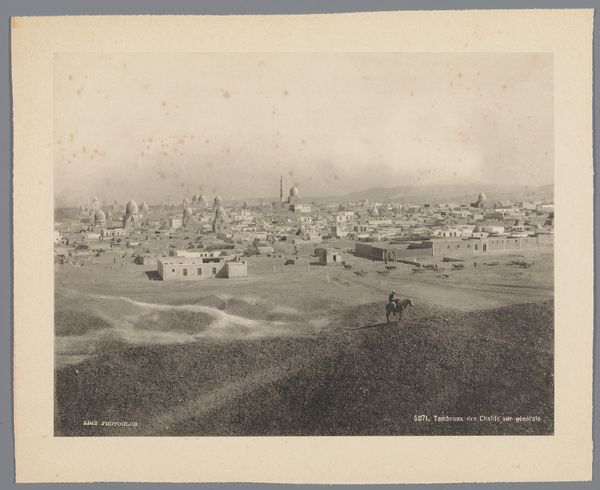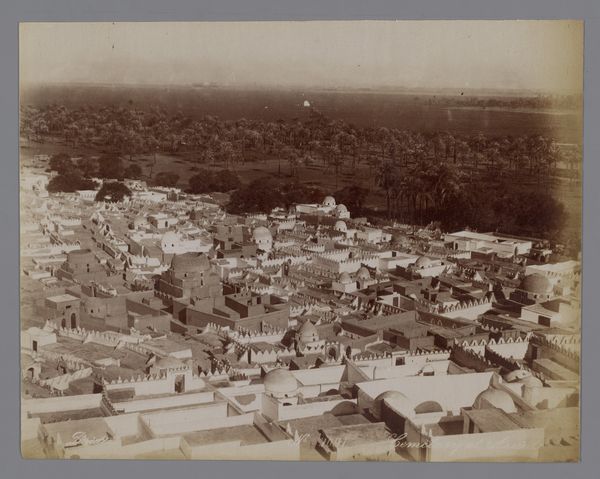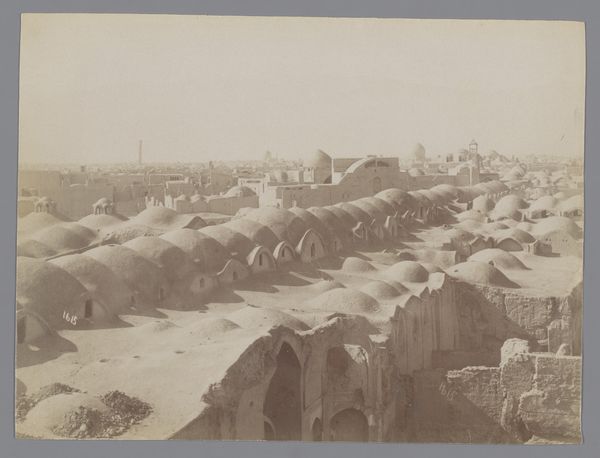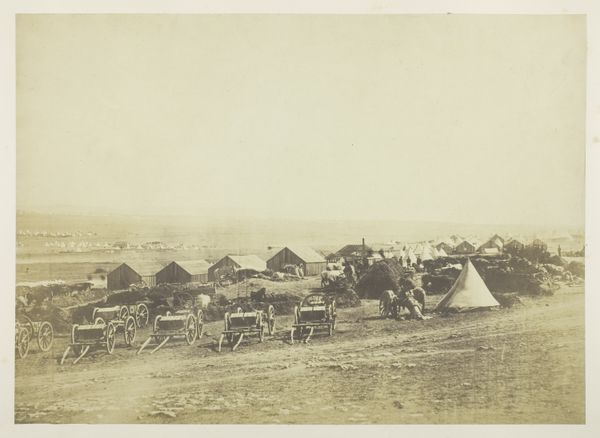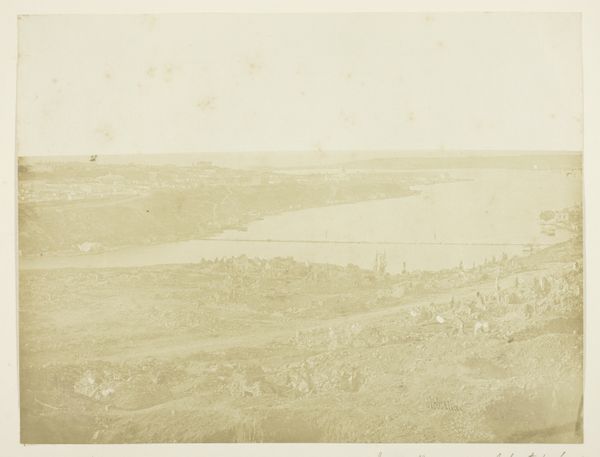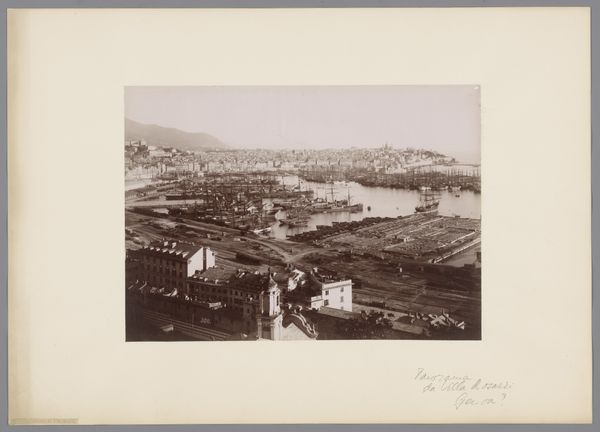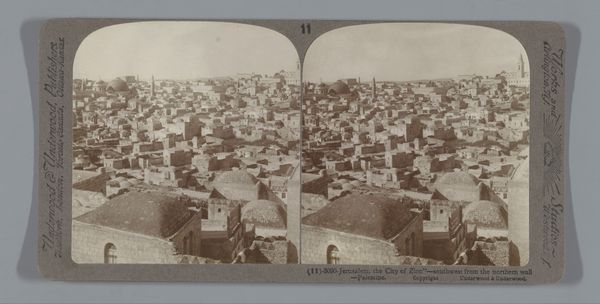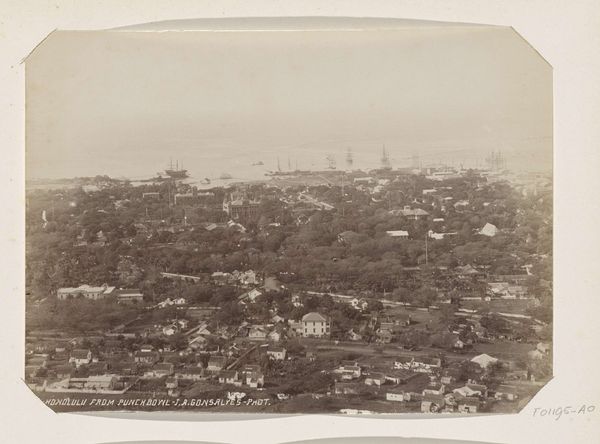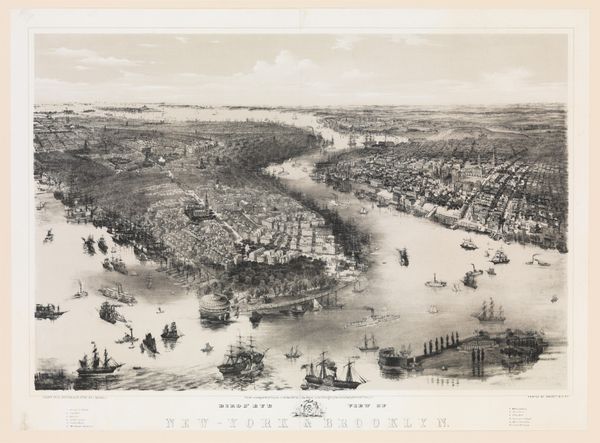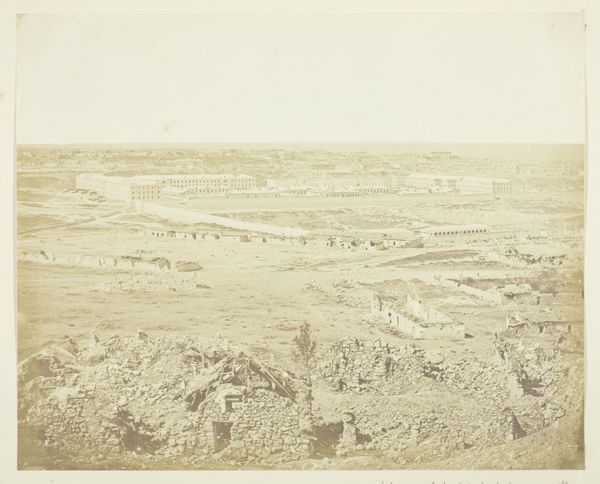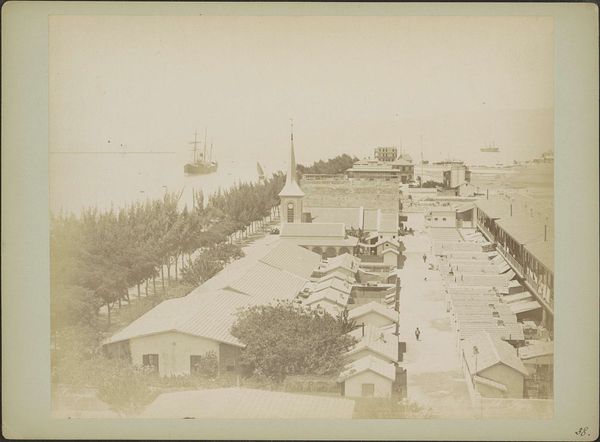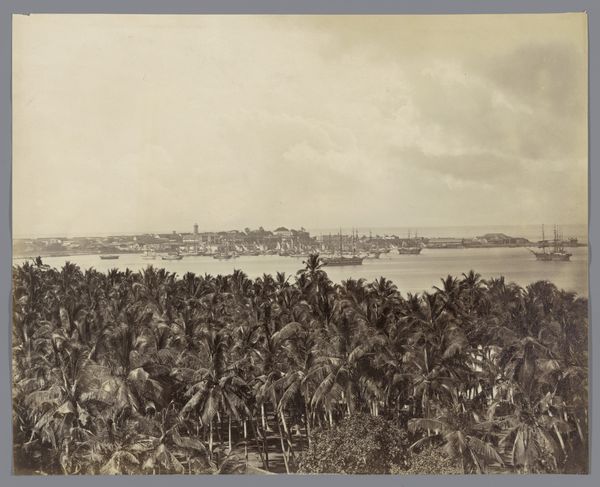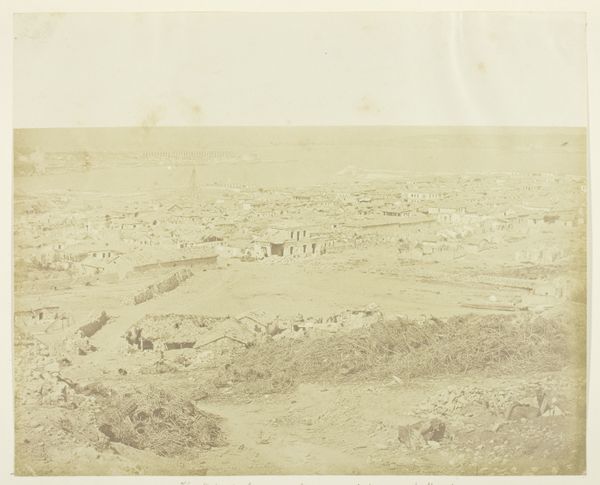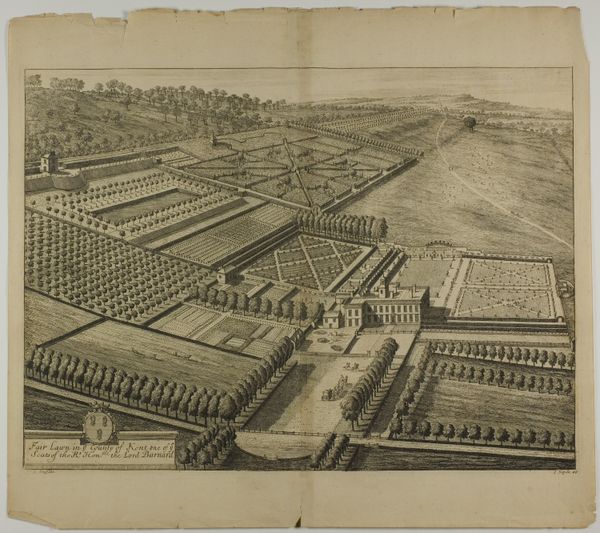
print, photography, albumen-print
# print
#
landscape
#
photography
#
cityscape
#
albumen-print
#
realism
Dimensions: height 197 mm, width 271 mm
Copyright: Rijks Museum: Open Domain
Editor: We're looking at "Tonnen aan de kust bij Alicante," or "Barrels on the Coast at Alicante," a photograph dating from before 1892 by C. Nicora, created as an albumen print. It's remarkably busy. What strikes me most is the sheer number of barrels; it feels like a study in texture and repetition. What do you see in it? Curator: Indeed, the repetition is key. The arrangement of the barrels establishes a rhythm that defines the entire composition. Note how the photographer uses the palm tree in the foreground to frame the scene, creating a clear distinction between foreground and background, a rather classical construction. Editor: I see that. And the tonality is limited to a narrow band of grays; there isn't much contrast, giving the whole image a flattened effect. Is there a particular method to how the barrels are organized? Curator: Precisely. The controlled palette reinforces the compositional structure. As for the arrangement, observe the implied lines directing the viewer's gaze towards the horizon. The photographer creates a sense of depth, albeit subtly, through perspectival recession. Notice also, how the staffage provides a sense of scale and further animates the overall texture. It invites us to ponder on their roles in the scene. Editor: Staffage? The little people? I never thought about it that way, but their inclusion does give a sense of scale. Looking at it now I wonder whether the structure within the artwork speaks about the structure of labor and economics in the late 19th century. Curator: The structural composition reveals not only the aesthetics but also the underlying semiotic potential within the scene, all contained in the work's visual architecture. It moves past simple representation and allows us to consider historical truths and interpretations. Editor: That’s a helpful way to view it, examining not just the barrels but the photograph itself as a carefully constructed… statement. Thanks. Curator: My pleasure. Close visual analysis allows for a deeper appreciation of the artwork's intrinsic qualities, irrespective of historical interpretation.
Comments
No comments
Be the first to comment and join the conversation on the ultimate creative platform.
